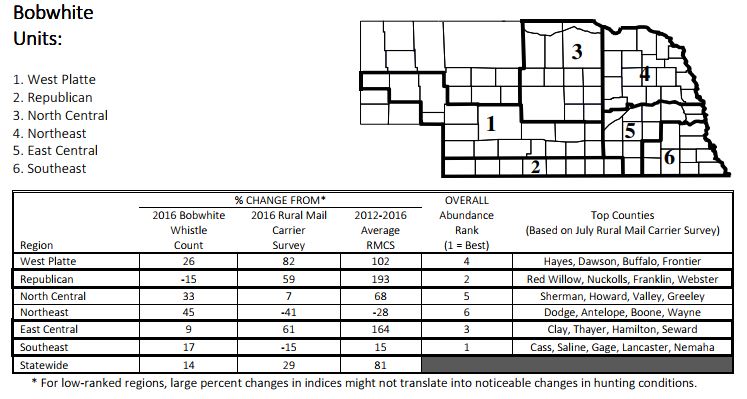Mild winter and solid production should make for another good quail hunt in Nebraska
Jeff Lusk, upland game program manager for the Nebraska Game and Parks Commission, is succinct in describing his prognosis for the upcoming quail-hunting season: “The quail population appears to have increased again, and it should be another good year for bobwhite hunting in Nebraska.”
Mild winter conditions benefited overwinter quail survival, and timely spring rains improved nesting habitat conditions. Luckily, a major late snowstorm that blanketed portions of the southwest and south-central parts of the state occurred before peak nesting for bobwhites, which minimized its effects on production.
Nebraska conducts a couple of counts that provide a glimpse at the state’s quail population. Statewide, whistle counts were 14 percent higher than in 2016, with increases in all regions save for Republican in the southern part of the state. Counts in the Rural Mail Carrier Survey were up 29 percent from 2016 overall, though both the southeast and northeast regions saw declines.

The top counties for quail likely will be Cass, Saline, Gage, Lancaster and Nemaha, followed by Red Willow, Nuckolls, Franklin and Webster.
“In the Southeast, good numbers of large bobwhite broods have been observed, indicating good production,” says Lusk. “Fall abundance should be as good as or better than in 2016. However, survey results provide only a broad-scale assessment of relative abundance and at local sites, within regions, bobwhite abundance might be either higher or lower than regional estimates suggest. Scouting before heading afield is encouraged.”
NEBRASKA HUNTING TIPS
* Dense stands of grass (such as CRP fields) are often avoided by Nebraska quail because the cover is too thick. Instead, seek out weedy patches with ample amounts of bare ground.
* Another key habitat element used extensively by bobwhites is woody cover, but it has to be the right kind. Unlike stands of mature trees, native shrub thickets (American plum and chokecherry, for example) and downed trees provide ideal loafing and escape cover for bobwhites.
Links
Nebraska Upland Forecast
Nebraska Public Access Tool
Nebraska Upland Birds Page